Knowing what to feed an African grey parrot will help you to plan your bird’s meals and ensure that its diet is balanced and nutritious.
Did you know that a leading cause of disease and death among African greys in captivity is due to malnutrition? Very often, this is brought about by a diet based almost exclusively on seeds.
The consensus among avian vets and experts is that a seed-based diet is heavily-biased toward fats and lacks several vitamins and other nutrients that are essential to a bird’s development and health.
In the case of sunflower seeds, which are a primary component of many seed packs sold for African grey parrots, the fat content is in excess of 50% by weight. Most other nuts and seeds contain a similarly high ratio of fats.
If you want your beloved feathered companion to have a long and healthy life, it is essential to ensure that its meals consist of all of the essential nutrients that it requires.
- The Best Diet For African Grey Parrots
- Parrot Food Preparation
- The African Grey Parrot Food List
- Acorn squash
- Adzuki bean
- Adzuki sprouts
- Alfalfa sprouts
- Almond
- Apple
- Apple (dried)
- Apricot
- Apricot (dried)
- Asparagus
- Aubergine
- Azuki bean
- Baby marrow
- Banana
- Banana (dried)
- Banana chili
- Banana chip
- Banana pepper
- Basil
- Beet
- Beet greens
- Beetroot
- Bell pepper
- Bengal gram
- Black-eyed bean
- Black-eyed pea
- Blackberry
- Blackcurrant
- Blueberry
- Bok choy
- Brinjals
- Broccoli
- Broccoli rabe
- Broccoli sprouts
- Brussels sprouts
- Butter bean
- Butternut pumpkin
- Butternut squash
- Button squash
- Cabbage
- Cactus fig
- Cactus fruit
- Cactus pear
- Cantaloupe
- Capsicum
- Carrot
- Carrot greens
- Cashew nut
- Cauliflower
- Celery
- Chana
- Cherry
- Chicken bone
- Chick pea
- Chickpea
- Chinese cabbage
- Chinese gooseberry
- Chole
- Ciblème
- Coconut
- Collard greens
- Corn
- Courgette
- Cranberry
- Cucumber
- Custard marrow
- Custard squash
- Date
- Des Moines squash
- Double bean
- Eggplant
- Egyptian pea
- Fig
- Garbanzo bean
- Gem squash
- Goat pea
- Goober
- Gooseberry
- Gramma
- Granadilla
- Granny squash
- Grape
- Grapefruit
- Green bean
- Green gram
- Groundnut
- Guava
- Hazelnut
- Heart of palm
- Honeydew
- Honeymelon
- Indian fig
- Kale
- Kiwi
- Kiwifruit
- Ladies' finger
- Lentil
- Lima bean
- Lucerne sprouts
- Madagascar bean
- Maize
- Mandarin
- Mango
- Mealie
- Mielie
- Monkey nut
- Mung bean
- Naartje
- Nectarine
- Ochro
- Okra
- Orange
- Pak choi
- Palm heart
- Papaw
- Papaya
- Passion fruit
- Pattypan squash
- Pawpaw
- Peach
- Peach (dried)
- Peanut
- Pear
- Pear (dried)
- Peas
- Pepper
- Pepper squash
- Persimmon
- Peter Pan squash
- Pindar
- Pineapple
- Pistachio nut
- Plum
- Pok choi
- Pole corn
- Pomegranate
- Popcorn
- Potato
- Prickly pear
- Pumpkin
- Quince
- Radish
- Rapini
- Raspberry
- Red beet
- Red mung bean
- Robot pepper
- Rockmelon
- Satsuma mandarin
- Satsuma orange
- Scallopini
- Scallop squash
- Schwoughksie squash
- Sieva bean
- Snow pea
- Spanspek
- Spinach
- Strawberry
- Sugar beet
- Sugar corn
- Sunburst squash
- Sweet corn
- Sweet melon
- Sweet pepper
- Sweet potato
- Tangerine
- Tomato
- Tomato (sun-dried)
- Tuna
- Unshu mikan
- Walnut
- Watermelon
- White squash
- Yam
- Yellow wax pepper
- Zucchini
The Best Diet For African Grey Parrots
The easiest way to do this is to feed your bird with pellets specially formulated for parrots. Supplement this with fresh fruit and vegetables daily in a ratio of around 70% pellets to 30% fruits and vegetables.
This is the best diet for African grey parrots.
Simply serving up meals in this ratio is not enough, though. You need to be certain that your grey actually eats what you provide.
Just like children, African greys are known to eat selectively when given the opportunity, and the selections that they make are not always the healthiest.
To help you decide what you can feed your pet, we’ve provided you with this comprehensive list of safe foods that you can feed your parrot for you to choose from.
African greys are fussy eaters though, and just because a food item appears in our list does not mean that your parrot will like it, or eat it at all.
If you notice that your parrot eats certain parts of its meal but routinely ignores other parts, then try replacing the food items that it is not eating with other items of similar nutritional value.
Parrot Food Preparation
Take heed of notes which accompany the list of foods. For example, if we state that a food should be offered in a cooked state, don’t offer it to your bird uncooked. The same applies if we say that a fruit or vegetable should be peeled, or that the pips or seeds should be removed.
We humans may be relatively tolerant of the pesticides that are used in the cultivation of fruits and vegetables, but an African grey has a body weight about one hundredth that of a human and will be much more sensitive to even small amounts of pesticide compared to a human.
For this reason, always wash fresh fruit and vegetables well before offering them to your pet, especially when these will be offered to your pet together with the skin or peel.
Alternatively, buy organic fruit or vegetables for your grey.
The African Grey Parrot Food List
The foods listed below have either been fed to our parrot, Kokkie, without problems, or have been listed as safe for African greys by at least two independent sources.
Some foods listed here are safe only if consumed in moderation, or in very limited quantities. If that is the case, we will state it clearly. Please exercise appropriate restraint when feeding these foods to your pet. If you are unsure about how much of such a food is too much for your bird then rather be safe and avoid it altogether.
Have fun feeding and nurturing a healthy pet.

Acorn squash
Vegetable
Other names: Des Moines squash, pepper squash
A medium-sized squash, usually dark green, with ridges along its length. The flesh is a yellow to orange color.
Untested with Kokkie.
Precautions:
We’re not certain whether this can be offered to your bird in raw form, but it should be fine if cooked.
Nutrition:
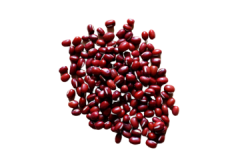
Adzuki bean
Seed
Other names: azuki bean, red mung bean
A small (5 mm/0.2 in) bean. Most commonly colored red.
Untested with Kokkie.
Precautions:
None known.
Nutrition:
Cooked adzuki beans have a high carbohydrate and protein content.

Adzuki sprouts
Vegetable
Untested with Kokkie.
Precautions:
None known.
Nutrition:
No nutrition data available.

Alfalfa sprouts
Vegetable
Other names: lucerne sprouts
Untested with Kokkie.
Precautions:
None known.
Nutrition:

Almond
Nut
Almonds can be given to your bird as an occasional treat. As with almost all nuts, their very high fat content makes them unsuitable for inclusion in a parrot’s regular diet.
Precautions:
None known.
Nutrition:

Apple
Fruit
Apples come in many different varieties. Experiment with different cultivars to see which ones your parrot prefers.
We usually offer Kokkie one or two slices of apple with the skin on.
Precautions:
Apples should always be cored, or have the seeds removed, before being fed to a parrot. Apple seeds contain a compound which can release cyanide when mixed with water.
Nutrition:
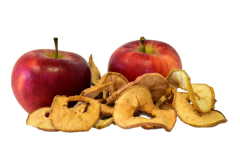
Apple (dried)
Fruit
Like most dried fruits, dried apple is high in sugars. Use dried apple as an occasional treat rather than as part of your parrot’s regular diet.
Precautions:
None known.
Nutrition:
No nutrition data available.
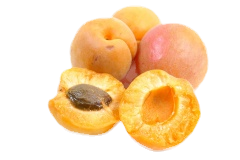
Apricot
Fruit
Precautions:
The apricot pip should be removed before feeding the fruit to the parrot as it can produce cyanide when opened.
Nutrition:
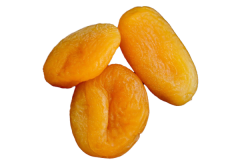
Apricot (dried)
Fruit
As with most dried fruits, sugar content is very high, and dried apricot should therefore not form part of your parrot’s regular diet. Instead, use it as an occasional treat.
Untested with Kokkie.
Precautions:
None known.
Nutrition:
Contains much more calcium per 100 g than the raw fruit.
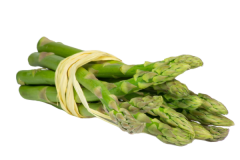
Asparagus
Vegetable
Untested with Kokkie.
Precautions:
Offer this in moderation. Too much can reportedly cause a severely upset stomach.
Nutrition:
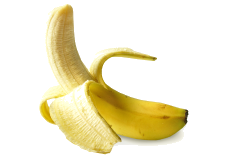
Banana
Fruit
Peeled.
Although banana peel should be edible, we have not tried feeding it to Kokkie.
Precautions:
None known.
Nutrition:
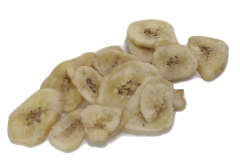
Banana chip
Fruit
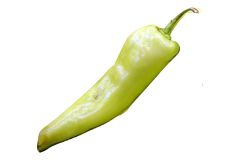
Banana pepper
Vegetable
Other names: banana chili, yellow wax pepper
Untested with Kokkie
Precautions:
None known.
Nutrition:
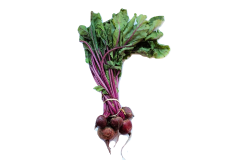
Beet greens
Vegetable
Untested with Kokkie.
Precautions:
None known.
Nutrition:
No nutrition data available.

Beetroot
Vegetable

Bell pepper
Vegetable
Other names: capsicum, pepper, robot pepper (South Africa), sweet pepper
Precautions:
None known.
Nutrition:

Black-eyed pea
Vegetable
Other names: black-eyed bean, goat pea.
Untested with Kokkie.
Precautions:
As with all beans, these should be well cooked before being offered to a parrot. Most beans are toxic when raw.
Nutrition:
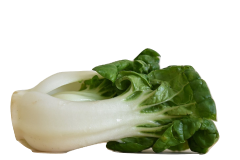
Bok choy
Vegetable
Other names: Chinese cabbage, pak choi, pok choi
Untested with Kokkie.
Precautions:
None known.
Nutrition:

Broccoli
Vegetable
Can be offered raw or cooked.
Precautions:
None known.
Nutrition:
Broccoli is a good source of Vitamins C and Vitamin K.
Broccoli sprouts
Vegetable
Untested with Kokkie.
Precautions:
None known.
Nutrition:
No nutrition data available.
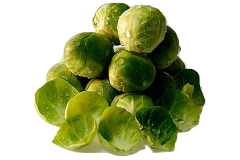
Brussels sprouts
Vegetable
Cooked.
Precautions:
Raw Brussels sprouts can potentially cause gas and bloating, so we recommend always cooking these before feeding them to your bird.
Nutrition:
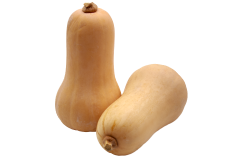
Butternut squash
Vegetable
Other names: butternut pumpkin, gramma.
As it is quite a large squash we don’t prepare butternut specially for our parrot, Kokkie. Instead, we give him some when we occasionally prepare it for our own consumption.
Because of this, he always gets it cooked and with the seeds and skin removed.
It could also be offered raw and with the seeds.
Precautions:
None known.
Nutrition:

Cantaloupe
Fruit
Other names: rockmelon (Australia), spanspek (South Africa), sweet melon (South Africa)
Not to be confused with honeydew, which has a smoother skin and flesh that is green instead of orange.
Precautions:
None known.
Nutrition:

Carrot
Vegetable
Parrots can eat carrots either raw or cooked.
Precautions:
None known.
Nutrition:
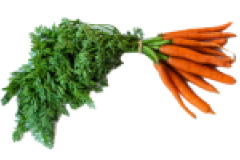
Carrot greens
Vegetable
Untested with Kokkie.
Precautions:
None known.
Nutrition:
No nutrition data available.

Celery
Vegetable
Raw or cooked.
Precautions:
Some sources suggest that the ‘strings’ in celery stalks can cause bowel blockage and should be removed. We have not confirmed whether this is true or not, but it is perhaps better to be safe than sorry.
Nutrition:

Cherry
Fruit
We’ve fed Kokkie cherries too infrequently to note any issues.
Precautions:
Always remove the pips before feeding cherries to your parrot. They contain a compound which can release cyanide when opened.
Nutrition:
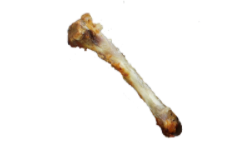
Chicken bone
Animal
Our parrot Kokkie’s favorite treat by far. He cracks open the bone to get to the marrow inside.
Precautions:
Always use bones from a cooked chicken and allow them to cool before feeding them to your parrot.
Nutrition:
No nutrition data available
Articles:
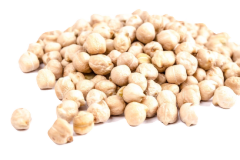
Chickpea
Vegetable
Other names: Bengal gram, chick pea, chole, Egyptian pea, garbanzo bean
Untested with Kokkie.
Precautions:
Always cook chickpeas for at least 30 minutes, and allow them to cool before feeding them to your parrot.
Nutrition:

Collard greens
Vegetable
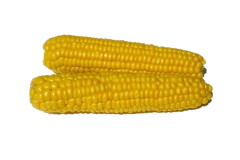
Corn
Seed
Other names: maize, mealie (South Africa), mielie (South Africa), pole corn, popcorn, sugar corn, sweet corn.
Precautions:
None known.
Nutrition:
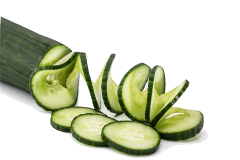
Cucumber
Vegetable
We occasionally feed our parrot, Kokkie, slices of unpeeled English cucumber – without salt.
Precautions:
None known.
Nutrition:

Eggplant
Vegetable
Other names: aubergine (UK, France), brinjals (South Africa, South Asia).
Offer only the cooked flesh of the fruit to your bird.
Precautions:
This plant is a member of the nightshade family so all the parts of the plant are toxic, with the exception of the fruit. To be extra safe, we would also remove the skin before feeding the cooked flesh to a bird.
Nutrition:
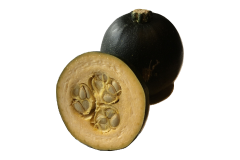
Gem squash
Vegetable
Gem squash is an inexpensive vegetable that is common in South African cuisine. It is perhaps not as well known in other countries.
Cut the squash in half, and boil well. We remove the seeds prior to boiling but they can probably be left in. Cut one or two wedge-shaped slices and serve. Some gem squash varieties retain a hard skin, even after boiling, and these will be easier for your bird to pick up and handle when eating.
Kokkie enjoys his gem squash and it’s a rare event when he does not eat even a little of it when we offer it to him.
Precautions:
None known
Nutrition:
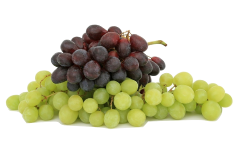
Grape
Fruit
Our African grey, Kokkie, does not seem to be too keen on grapes. Your bird’s tastes may differ.
Precautions:
Grapes have a high sugar content, so offer grapes to your bird sparingly – no more than one or two a day.
Nutrition:
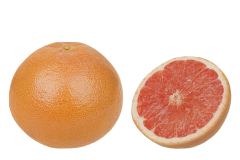
Grapefruit
Fruit
Untested with Kokkie.
Precautions:
All citrus fruits are acidic and therefore should be offered in moderation.
Nutrition:
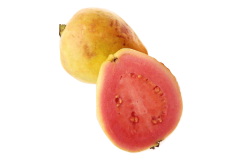
Guava
Fruit
Guava is another of Kokkie’s favorite fruits. A slice or two of guava with the skin on is enough to make him happy.
Precautions:
None known.
Nutrition:
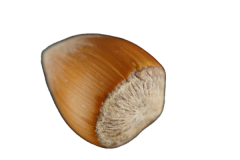
Hazelnut
Nut
Untested with Kokkie.
Precautions:
Most nuts have a very high fat content and hazelnuts are no exception. They also have a high calorie count so they should not form part of your parrot’s regular diet. We suggest that you feed hazelnuts to your bird as an occasional treat only.
Nutrition:

Heart of palm
Vegetable
Other names: palm heart.
Untested with Kokkie.
Precautions:
None known.
Nutrition:

Honeydew
Fruit
Other names: honeymelon
Honeydew is similar in appearance to cantaloupe, but has a smoother skin and the flesh is green instead of orange.
Precautions:
None known.
Nutrition:
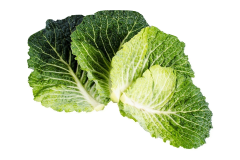
Kale
Vegetable
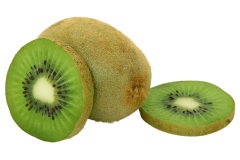
Kiwifruit
Fruit
Other names: Chinese gooseberry, kiwi
Precautions:
Peel before serving.
Nutrition:

Lentil
Vegetable
Untested with Kokkie.
Precautions:
Lentils should always be cooked well before being fed to your bird.
Nutrition:

Lima bean
Vegetable
Other names: butter bean, Double Bean, Madagascar bean, sieva bean.
Untested with our African grey.
Precautions:
Like most beans, Lima beans are toxic when raw and must be cooked by boiling for at least 30 minutes.
Nutrition:

Mung bean
Vegetable
Other names: green gram
Untested with Kokkie.
Precautions:
Always cook beans by boiling for at least 30 minutes before feeding them to your grey.
Nutrition:
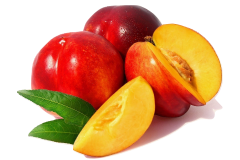
Nectarine
Fruit
Precautions:
The nectarine is a member of the peach family. Like a peach, the inside of a nectarine pip contains a substance which releases cyanide when mixed with water, so remove the pip before feeding this to your pet.
Nutrition:
No nutrition data available.

Okra
Vegetable
Other names: ladies’ fingers, ochro.
Untested with Kokkie.
Precautions:
None known.
Nutrition:
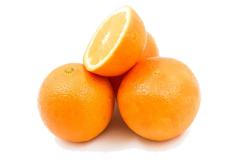
Orange
Fruit
Precautions:
All citrus fruits are acidic and therefore should be offered in moderation.
Nutrition:

Papaya
Fruit
Other names: papaw, pawpaw.
We remove the skin and seeds before feeding papaya to Kokkie, but this is simply personal choice. If you choose to leave the skin on, make sure that you wash the fruit before cutting it open.
Precautions:
None known.
Nutrition:
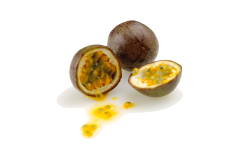
Passion fruit
Fruit
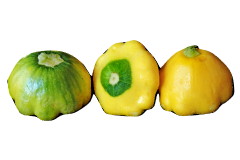
Pattypan squash
Fruit
Other names: button squash, ciblème, custard marrow, custard squash, granny squash, Peter Pan squash, scallopini, scallop squash, schwoughksie squash, sunburst squash, white squash
Precautions:
None known.
Nutrition:
No nutrition data available.

Peach
Fruit
Precautions:
Peach pips contain a substance which releases cyanide when mixed with water, so remove the pip before feeding peach to your pet.
Nutrition:

Peach (dried)
Fruit

Peanut
Nut
Other names: goober, pindar (USA), groundnut, monkey nut (UK).
Precautions:
Low quality peanuts may be infected by a mold called Aspergillus flavus which produces harmful substances called aflatoxins. These can cause liver damage or cancerous tumors.
If there is any doubt about the quality of the peanuts that you intend to feed to your parrot, always use peanuts intended for human consumption. Most countries have laws which govern the production of peanuts intended for humans, and which ensure that these peanuts are free of mold.
To minimize salt intake, offer only unsalted peanuts to your parrot.
Peanuts are not really nuts, but legumes. Nevertheless, their fat content rivals that of nuts, which is very high. For this reason you should only offer your parrot a peanut or two as an occasional treat. Peanuts should not form part of your parrot’s regular meals.
Nutrition:

Pear
Fruit
Precautions:
Always remove the seeds from a pear before feeding to a parrot. Just like apple seeds, pear seeds contain a compound which can release cyanide when mixed with water.
Nutrition:

Pear (dried)
Fruit
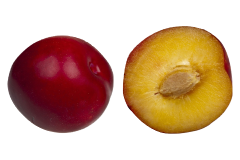
Plum
Fruit
Precautions:
Plum pips contain a substance which releases cyanide when mixed with water, so remove the pip before feeding this to your pet.
Nutrition:
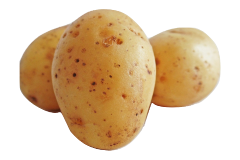
Potato
Vegetable
Parrots can eat potato, whether it is boiled, baked, mashed or in the form of fries or chips.
Kokkie, our parrot, is very partial to potato in any form, but is especially fond of fries.
Precautions:
As a member of the nightshade family, all parts of the potato plant are toxic. Properly cultivated and stored tubers are the exception. If the raw potato tuber is sold for human consumption it should be safe for your parrot to eat.
Potato should always be cooked and unsalted.
It’s generally a good idea to avoid sauces and gravies that the potato may have been cooked in, or that accompany it when served, unless you’re absolutely certain that all of the ingredients are safe.
Nutrition:
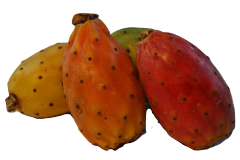
Prickly pear
Fruit
Other names: cactus fig, cactus fruit, cactus pear, Indian fig, tuna
Precautions:
Peel before serving.
The skin surface contains many very thin, barely visible thorns or spines. They are not particularly painful when they penetrate your skin, but they can be very irritating. Due to their small size they are extremely difficult to locate and remove. Handle with care and only grip the fruit at each end using a thumb and another finger.
Nutrition:
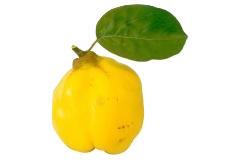
Quince
Fruit
We buy quince for Kokkie whenever we can. It’s fairly rare where we live and is not always available.
It is one of our parrot’s favorite fruits, though, possibly because he doesn’t get it in his food bowl all that often. It’s usually just a matter of time before he pounces on it once it has been served.
After washing it, prepare the quince for your bird by cutting one or two fairly large slices along the length of the fruit, leaving the skin on. Then cut each slice in half and place the rest in the refrigerator for the following day.
When re-using the leftover quince, cut away any browning that may have developed on the exposed surfaces before you serve the fruit to your parrot.
Precautions:
None known.
Nutrition:

Rapini
Vegetable
Other names: broccoli rabe
Untested with Kokkie.
Precautions:
None known.
Nutrition:
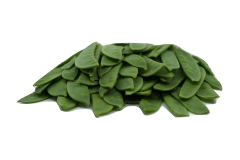
Snow pea
Vegetable
Both the seed and the pod are edible.
Untested with Kokkie.
Precautions:
Although other parts of the plant, such as the leaves and stems, are used in Chinese cuisine, we don’t know whether they are safe for parrots to eat.
Nutrition:

Spinach
Vegetable

Sweet potato
Vegetable
Not to be confused with yam, which it is sometimes called, especially in North America.
Sweet potato and yam are actually different vegetables. Although the skin and flesh of both can vary widely in color, sweet potato commonly has a purple skin with orange-colored flesh, while the skin of yam is usually brown with white flesh.
Cook before serving.
Precautions:
None known.
Nutrition:
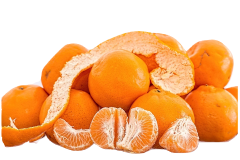
Tangerine
Fruit
Other names: mandarin, naartjie (South Africa), satsuma mandarin, satsuma orange, unshu mikan.
Precautions:
All citrus fruits are acidic and therefore should be offered in moderation.
Nutrition:
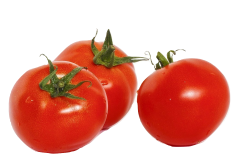
Tomato
Vegetable
Precautions:
Use sparingly. Tomato has high acidity and can cause ulcers.
Nutrition:
Articles:

Tomato (sun-dried)
Vegetable
Precautions:
Although lower in acid content than raw tomato, sun-dried tomato can still cause ulcers in your bird and should be used sparingly.
Nutrition:
Articles:

Walnut
Nut
Untested with Kokkie.
Precautions:
Like most other nuts, walnuts have a very high concentration of fats. They should rather be used as an occasional treat for your parrot, and should not form part of their regular diet.
Nutrition:
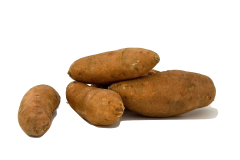
Yam
Vegetable
Not to be confused with sweet potato, which is sometimes called yam, especially in North America.
Yam and sweet potato are two different vegetables. Yam has rough, brown bark-like skin and white flesh, whereas sweet potato commonly has a purple skin with orange flesh.
Cook before serving.
Untested with Kokkie.
Precautions:
None known.
Nutrition:
Zucchini
Vegetable
Other names: baby marrow, courgette
Precautions:
Home-grown zucchini can sometimes contain high levels of cucurbitacins, which are toxic, for humans as well as for parrots. Zucchini cultivated for the food market is deliberately bred for low levels of this toxin, and is therefore safe to eat.
Nutrition:
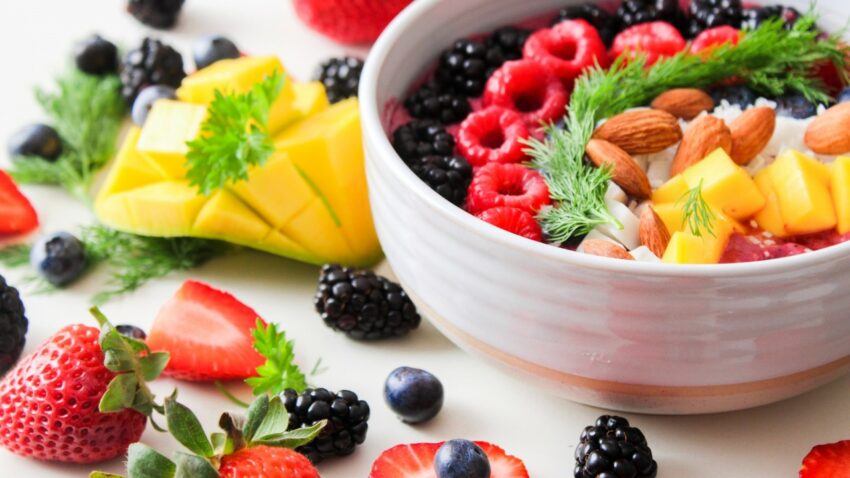
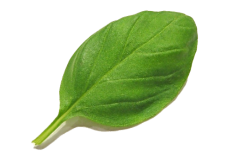



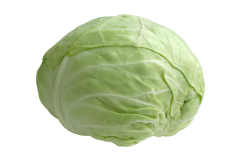


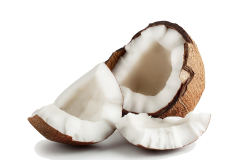

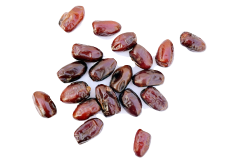

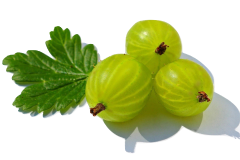
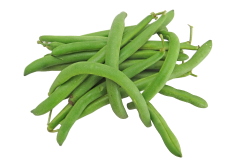
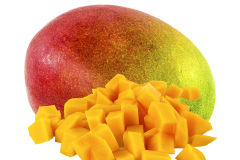
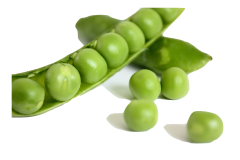

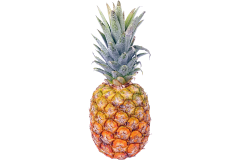
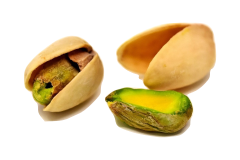

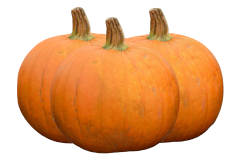

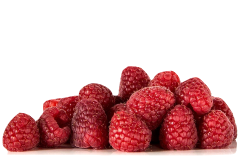
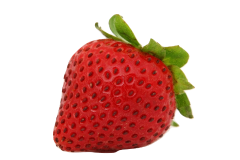
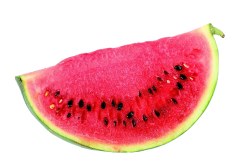
Very informative post! Who knew a parrot would have such a varied diet. I particularly like the table of contents they can eat. it break it down nicely and is very clear.
Thank you Russ. The list of edible foods for parrots is a work in progress. There are many more foods that are safe for them to eat, and I intend to have the list grow substantially in the weeks to come.